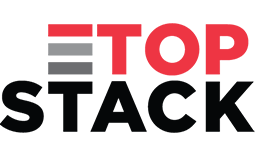Not Sure How to Answer an Interview Question? Here’s What to Do

It’s going to happen. You’re going to run into an interview question you can’t answer. You may have prepared extensively for the interview, gotten plenty of sleep, and went in primed to rock it. But then there’s a curveball question and you draw a blank. What should you do?
- Slow down and take a breath.
You can control the interview process by using a stalling tactic. For example, try saying, “That’s a good question,” or use some other phrase to acknowledge you’re thinking about it. Tell the interviewer you’re thinking about it. While it’s natural to want to fill the silence with words, try to just sit still with the silence for a moment as you try to work out the question. You can also ask clarifying questions. Then move to step two. - Solve the problem out loud.
Sometimes interviewers want to figure out how you think, so they deliberately ask questions that require you to figure out a problem and provide a solution. After you’ve taken a moment to clarify the question and get control of the conversation, walk through the steps necessary to come up with the answer. For example, if you’re asked about a particular process you don’t have a series of steps for, describe the steps you would likely take to accomplish your goal. Try to frame the conversation in steps, such as, “First, I would probably do X,” and finish with “Lastly, I would.” That will help frame your conversation for the interviewer. - Redirect the conversation to something you do know.
If you’re asked a question you can’t answer, try redirecting the conversation into an area you know. Try to think about crossover skills you bring to the table, even if you don’t have the specific skill they’re asking about. That approach is better than admitting you don’t have the skill or just cannot answer the question. Talk about how you would use your existing skills to solve the problem or how you’re a great troubleshooter able to learn new things quickly. - Have a fallback answer, just in case.
If you get a question that requires a definition you simply don’t know or an explanation of a concept you haven’t learned yet, try to work through it if you can. If you simply can’t answer because it’s a term you’re not familiar with, try expressing that while you haven’t learned about that concept yet, you are very excited and eager to learn more about the industry. You can also say you don’t know, but you’re going to Google it as soon as you leave and learn it immediately. Then, when you do your interview follow up, make sure you email the answer to the question to show your ability to learn and your eagerness for the job.
Working with a recruiter is one of the best ways to prepare for your next interview. Recruiters work closely with their clients and can fully prep you for the questions you’ll be asked or at the very least the interview team you’ll meet. They are your best tool to help you land the job you’ve been dreaming about. Contact Top Stack to take the next step in your career.

















